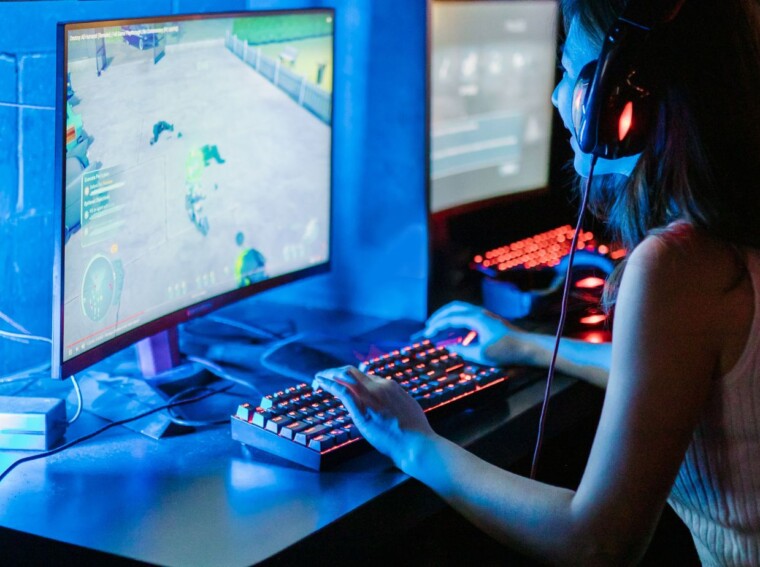How Fan-Made Projects Like Counter-Strike, Dota, and Garry’s Mod Took Over the Industry
Modding has been part of gaming for decades. Most of the time, it means small tweaks—new textures, extra weapons, or fun side modes. But now and then, something bigger happens. A mod hits the right nerve, at the right time, with the right audience. And when that happens, it doesn’t just improve a game on TonyBet—it creates a whole new one.
Some of the most iconic titles in gaming didn’t begin in studios or on corporate whiteboards. They came from fans. People messing around with tools, trying to make something cool. Counter-Strike, Dota, and Garry’s Mod are three such stories. And they didn’t just succeed—they changed the industry.
Counter-Strike: The Mod That Made Shooters Competitive
Back in 1999, two guys—Minh “Gooseman” Le and Jess Cliffe—were messing with Half-Life. They built a mod that pitted two teams against each other: terrorists and counter-terrorists. One side plants a bomb or holds hostages; the other tries to stop them. That was the idea behind Counter-Strike.
There were no second chances in a round. You died, you waited. The maps were tight and tactical. You needed aim, yes—but also patience and teamwork.
It caught on fast. LAN cafés were full of it. Word spread. Valve took notice, brought the creators onboard, and in 2000, Counter-Strike became a standalone game.
The rest is history. It helped define competitive shooters. The idea of a “clutch” play? That’s from here. Over time, it evolved into CS:GO, and more recently Counter-Strike 2. But the core loop is the same—and still addictive.
Today, it’s a cornerstone of esports, with global tournaments, millions in prize money, and a player base that spans generations.
Dota: A Map That Changed Strategy Games Forever
While Counter-Strike was making shooters serious, something else was happening inside Warcraft III. A custom map called Defense of the Ancients, or Dota, started gaining traction.
Instead of managing armies, each player controlled one hero. There were lanes, towers, and a main base (the “Ancient”) to defend. It flipped the real-time strategy genre on its head. You weren’t building bases—you were fighting, leveling up, coordinating with teammates.
It was rough around the edges, but people loved it. Forums lit up with guides, hero breakdowns, and strategy debates. Updates were community-driven, and balance was an ongoing battle.
Dota didn’t just succeed—it gave birth to a genre: the MOBA. Without it, there’s no League of Legends. No Dota 2. No millions of players grinding ranked matches every day.
Eventually, Valve stepped in again. They hired IceFrog, one of Dota’s lead modders, and released Dota 2. It stuck close to the original, just with a new engine and global backing.
Now, The International—Dota 2’s world championship—has prize pools that rival the biggest events in sports. All of it started with one custom map.
Garry’s Mod: When No Rules Became the Rule
While Counter-Strike and Dota leaned into competition, Garry’s Mod went in the opposite direction. Made by Garry Newman in 2004, it was originally a mod for Half-Life 2. But unlike most games, it didn’t have goals. Or missions. Or structure.
What it had was tools. Players could spawn objects, play with physics, and just… mess around. There wasn’t a “right” way to play.
That openness was the hook. People started using GMod to make their own game modes. Roleplay servers popped up. Trouble in Terrorist Town, Prop Hunt, sandbox building—none of it was officially in the game. It came from the players.
Others used GMod for video content. Comedy skits, machinima, animations—early YouTube was full of it. In a way, GMod was less a game and more a digital toybox.
And it worked. Because people didn’t want rules. They wanted freedom. And GMod gave them the tools to build their own fun.
What Made These Mods So Different?
Lots of mods come and go. Most never reach this level. So why did these ones break through?
Community First
None of these mods succeeded because of marketing. They grew because people cared. Players hosted servers, wrote tutorials, made fan content. The communities carried them.
Simple Hooks, Deep Gameplay
Each mod was easy to pick up. Shoot enemies, pick a hero, build something weird. But they had layers. The more time you put in, the more they gave back.
Studio Support at the Right Time
Valve (and to some extent Blizzard) stepped in when these projects hit a tipping point. Without that backing, they might’ve stayed in the shadows.
Timing and Culture
All three matched what players were hungry for at the time. Competitive play, team-based strategy, open creativity. They didn’t invent those ideas, but they delivered them in the right way, at the right moment.
The Lasting Impact of Modding
These aren’t just stories of successful mods—they’re stories about how games are made and who gets to shape them.
Modding used to be something niche. Today, it’s part of gaming culture. Platforms like Steam Workshop, games like Minecraft and Roblox, and even tools like Unreal Engine all make it easier for players to become creators.

Studios now encourage it. Some hire modders. Others build mod support right into their games. Modding has gone from side hobby to industry pipeline.
It also reminds us of something important: innovation doesn’t always come from the top. Sometimes, it comes from people just playing around—modding a map, tweaking a mechanic, or trying to make something fun for their friends.
Culture, Not Just Code
Counter-Strike, Dota, and Garry’s Mod weren’t born in boardrooms. They came from fans. And in the process, they changed how we play, watch, and even think about games.
They weren’t just clever code. They were moments. Movements. Proof that with the right tools and a bit of freedom, players don’t just consume games—they shape them.
That’s the legacy. Not just new genres or big tournaments, but a reminder that creativity can come from anywhere—and sometimes, from the most unexpected places.
